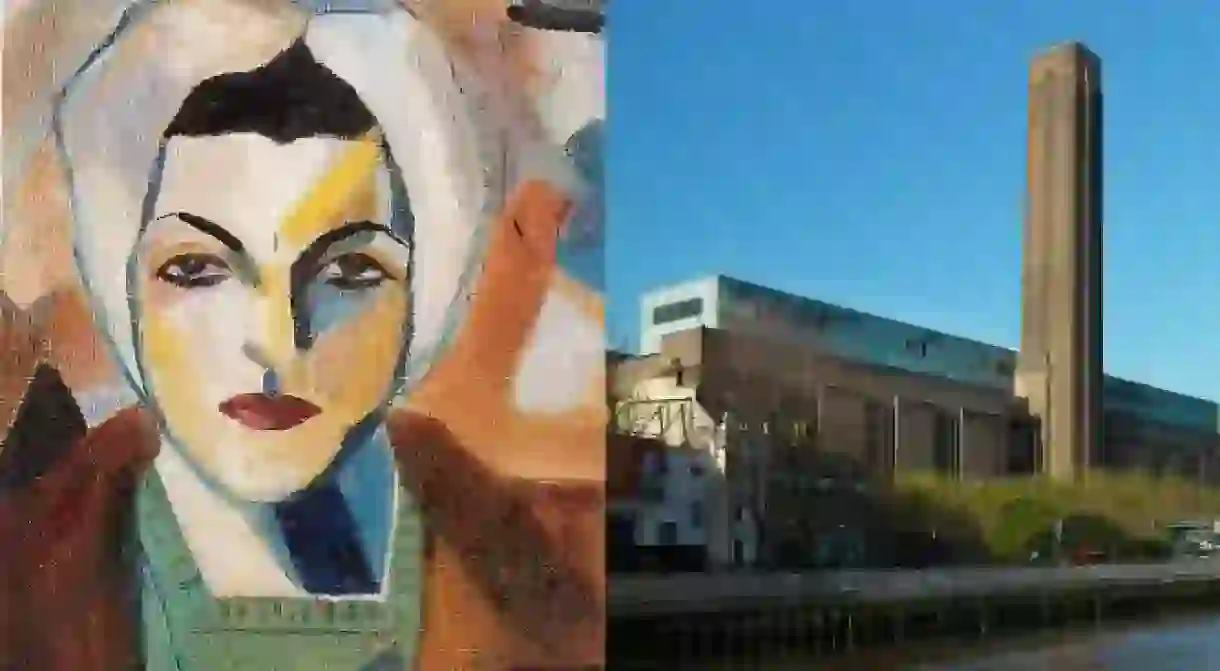Choucair at Tate Modern - The Pioneer of Abstract Art in the Middle East

Born in 1916, Saloua Raouda Choucair is thought to be Lebanon’s first abstract artist. With her artwork being renowned for its exploration of the relationships between materials, her oeuvre consists a range of mediums and forms. Melissa Pearce explores the life and work of this pivotal artist, and looks at her exhibition current at London’s Tate Modern.

The Tate Modern is currently showing a groundbreaking exhibition: the first major collection of Saloua Raouda Choucair’s works. Born in Beirut in 1916, Choucair has been acknowledged as Lebanon’s first abstract artist, having taken part in the first known abstract art exhibition in the Arab world, and today continues to work and live in her home city. Primarily dealing with painting and sculpture, such a collection of the female artist’s significant body of works has never before been seen as an entity. Although active for over five decades, she is now being recognised internationally as an important figure in the history of art, having her career illustrated in a catalogue raisonné in 2002.
Serving as a key figure in the Arab art world, Choucair took root as an artist initially studying with Lebanese artists Moustafa Farroukh and Omar Onsi, after which she left Beirut to move to Paris in 1948. Working and studying at the renowned schools of fine arts, the École Naitionale supérieure des Beaux-Arts and La Grande Chaumière, she also occupied the studio of French artist Fernand Léger whose early works of Cubism and abstraction can be seen as influential to Choucair. Her works in abstract art were well received in Paris, and after some success here she chose to focus her skills on working in sculpture. It is these forms carved from wood and stone for which she has become most famous, winning several awards at the top salons during the 60s. Her later career saw her teaching sculpture in Lebanon in 1977 after which she became a lecturer at the American University of Beirut in 1986.
The Tate Modern’s exhibition is an impressive collection of Choucair’s works, honing in on her later sculptures, but also allowing the viewer to explore her use of shape and colour by showing earlier examples of her experiments with painting from the early 40s, such as Self Portrait (1943). Her later celestial sculptures of fiberglass, which explore the trajectory of line and movement, are displayed at the end of the exhibit, and illuminate a tranquil serene feel, which can be seen to highlight the spiritual aspect of her works.
(Left) Saloua Raouda Choucair, Poem, 1963-5 | Tate © Saloua Raouda Choucair Foundation | (Right) Saloua Raouda Choucair, Infinite Structure, 1963-5 | Tate. Purchased with funds provided by the Middle East North Africa Acquisitions Committee 2011 | © Saloua Raouda Choucair Foundation
Throughout her career as an artist, Choucair has consistently expressed a passion for Islamic geometric art and has always emphasised her rational way of thinking, having long been interested in arithmetics and rejecting any adjectival notions in her works. Using principles from Sufism, science and mathematics across all of her projects, her paintings of gouache and oil on canvas can be seen to show an influence from early Western 20th Century European art, as she explores the regular use of simple geometric shapes and the influence of colour upon the viewer’s perspective, which can be seen in her piece titled Composition in Blue Module (1947-51). Her works of abstraction are particularly interesting as she strives to abandon the movement’s common emphasis on personal expression in favour of her profound merger of abstract and Islamic art.

Her sculptures are diverse and she shows a preference towards natural materials, regularly working with wood and stone. Her elegant pieces often contain several individual sculptures that work together, communicating with one another in order to act as one form whilst also having the potential to stand alone as seen in Poem (1963-5). With these pieces, Choucair is illustrating the relationship between the objects and their surroundings, as well as the internal dialogue between the interacting abstract forms. The exhibition makes one immediately aware of the weight of Choucair’s works in relation to the art history of the 20th Century as well as the broader canon, and we can see how her works explore her chosen themes in a mature and astute way.
Saloua Raouda Choucair’s work is currently on display at Tate Modern until the 20th October, 2013. For more information please visit Tate Modern’s website.
By Melissa Pearce













